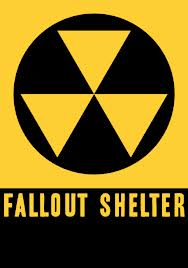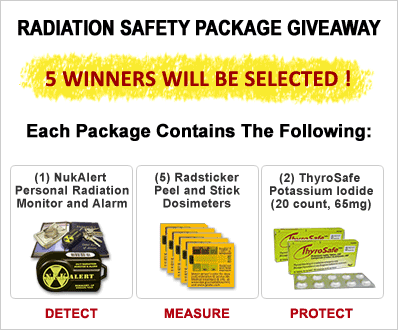This article is about preparedness but in a roundabout way. It’s about changes I’ve made in order to be healthier and better prepared, physically, for my future. I’m sharing in hopes that it might help some of you. I’m also hoping you will share with me and others some of the things you have done. I’m not going to talk about working out or getting in shape. It’s not that I’m against it but as I mention in Preparing for Physical Limitations , I care more about functional fitness.
A little background is probably in order; I have always been a pop/soda/coke drinker. I used to drink regular and then switched to diet ten years ago to lose some weight. My grandmother is a type2 Diabetic, as is my father. This gave me a 75% chance of becoming a type2 Diabetic as well. Five years ago I was told I had become just that.
I went through a whirlwind of changes. Meds were added but I was bound and determined to eventually control my Diabetes with diet and exercise. Over the last five years, I have tweaked my diet and have eaten healthier than I ever have and healthier than most people I know. I started working out and took a real world martial arts class called “Haganah”. I’ve had a few health issues related to my back and left leg that have limited my physical activity the last couple of years.
Through it all, my weight was pretty constant and my A1C, which is the test that measures ones’ glucose level, was always on the high end. My doctor, however, was never very concerned and added another med to control the blood sugars, saying the higher numbers could be a reaction to the pain I was having in my back and leg. This is possible, as all kinds of stress can raise glucose levels, but it just didn’t sit right.
I went through a week or two where I was eating a very healthy diabetic diet and my numbers were even higher than usual. I made an appointment with a diabetic educator at my clinic and brought a food log to prove I was eating a very healthy diet. There was no reason for my blood sugar to be as high as it was. She agreed and added yet one more med, bringing the total meds to three, to control my ever climbing blood sugars. This helped some, but they were still a bit higher than they should have been.
I started seeing a chiropractic neurologist to see if she could help with my back and leg pain. We went over diet, physical activity, pain management and a few other things. She said I needed to do the following: Start taking two supplements and drastically reduce the amount of diet soda/pop/coke I was drinking (she said I could have one can a day).
She asked if I was up for giving up the diet pop. I told her I was so tired of being in pain, that if she told me to eat twigs and berries, I would. She said she just might do that and then told me to take two natural supplements. One was UltraGlycemX which, in my opinion, would have been the next step DOWN from twigs and berries, as far as taste goes. This was something to mix in water twice daily. I needed to take this while the blood sugar numbers came down and leveled off. UltraGlycemX is a medical food that provides “Nutritional Support for Conditions Associated with Type 2 Diabetes”.
She also started me on a supplement called Protoglysen , which “provides a diverse range of botanicals to help support modulating the insulin response and support blood sugar stability”. This is in the form of a capsule taken twice a day, and is something I will take for some time.
I had to stop drinking the diet soda/pop/coke. She called it “poison”. She said the chemicals, mainly the artificial sweeteners, were causing so much inflammation, which was adding to the pain and keeping any adjustment she made from doing any real good. She said there was also a very good chance that it was the culprit for my high blood sugar levels.
She asked me to reduce the number of cans I was drinking by one or two a day, that going cold turkey might cause some nasty headaches due to the lack of caffeine, which was another thing she recommended I stop ingesting. She said the only sweeteners I should use are Stevia or Xylitol, both being natural. She recommended finding something to drink besides water, as many people get bored with only being able to drink water all day.
I was able to find Stevia in packets at vitamin store and even Walmart carries Stevia in the raw in packets. We haven’t had much luck finding Xylitol. Fair warning; Stevia can have a bitter aftertaste. Trudee also went on the hunt for Lipton Unsweetened Decaf Iced Tea Mix and found it locally. Another thing I found was True Lemon , which has other flavors as well. They are an all-natural drink mix that comes in a packet you can pour into a water bottle. Another thing I found that I enjoy very much is Sobe Lifewater. It offers a variety of fruity drinks that are sweetened with Stevia in the form of “Pure Via”. There are also a few soda/pop/coke companies that have started using Stevia. Unfortunately, they are quite expensive.
I’m not going to get into the effects that Aspartame or any of the other artificial sweeteners can have, but you can find plenty of information with a quick internet search. Here are just two articles on Diet Pop; What’s So Bad About Diet Soda? And Can Diet Drinks Raise Blood Sugar Levels?
So, where has all of this gotten me? It took me a week to get down to one Diet Dr. Pepper a day, which is what I drink now. I stopped the UltraGlycemX a couple months after my numbers dropped down to normal ranges. I continue to take the Protoglysen. Remember, I said I was taking three different meds to control the diabetes and my numbers were still high? One month after reducing to one can of Diet Dr. Pepper a day, my numbers dropped down to normal. Roughly one month later, I saw my doctor and was taken off one Diabetes med. I had my A1C checked and it has also dropped dramatically. I just stopped taking a second med and my numbers haven’t risen at all. I spoke with my doctor and he said I could stop the last med and watch the numbers closely to see if they come up.
I’m not endorsing or recommending the supplements I was put on, but if you have Type 2 Diabetes you might want to see what your doctor thinks about trying them. I printed out information and brought it to my doctor. He simply cautioned me to watch for potential lows, which are far more dangerous than highs. I think the supplements had a hand in my numbers coming down, but not nearly as much as getting rid of the diet pop did. You might be wondering why I don’t quit it completely. It might be silly, but Diet Dr. Pepper is one of my favorite things. I hated that I had to reduce my intake. I look forward to my one can a day…cold dead hands. LOL
I’m not sharing any of this for a pat on the back, but to share with you what happened when I reduced the diet soda/pop/coke. If you drink diet pop, are a diabetic with numbers that are unusually high for no reason, or you have health issues that can’t be explained, look into the effects of the artificial sweeteners and consider reducing or stopping as much as you can.
On a side note, when my numbers were high, I hardly ever “cheated” by eating any sweets or ice cream, as I knew my numbers would skyrocket. Since they dropped to such normal levels, I have indulged a bit and my numbers stay well within range.
If you liked this article please think about sharing it on the social media listed below, thanks!


















